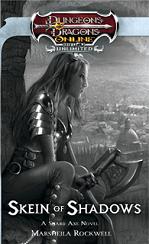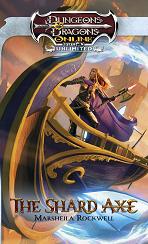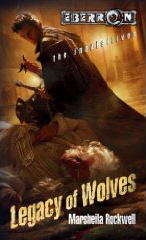I recently passed a milestone in my professional career as a writer. I collaborated on a novel with Eric Flint, and the manuscript (well, the Word file) was just turned in to the publisher (Baen). Unless the publisher changes the title, it should see print as 1636: The Devil’s Opera. I’ve made professional level sales of several shorter works, but that’s the first full length novel (165,000 + words) that will come out with my name on it, second billing though it will be. To say I’m somewhat exhilarated about this event would be a serious understatement.
When will it come out? I don’t know for sure; possibly in late 2013, more likely in 2014. There will be both a hard copy edition and an e-book edition from Baen.
What’s it about? Well, there isn’t a short answer to that. It’s a new alternate history story in the series that began with 1632, the first novel in the Ring of Fire series. There are over five million words in print in that series right now, between the novels and the anthologies and the Grantville Gazette e-magazine issues, all dealing with how approximately 3000 residents of a blue-collar West Virginia town survive and thrive when they somehow get dumped back in 1631 Germany in the middle of the Thirty Years War. This is just another episode in that extended story. Most of the novels in the series roam all over Western and Central Europe: large canvases, in other words, with correspondingly large time frames. 1636: The Devil’s Opera will be somewhat unique, in that it’s focused in a single location-the German city of Magdeburg-and it only covers a time frame of maybe four months. And there’s something in it for everyone: murder, music, boxing, financial irregularities, taverns and dives, tragedy, guns, humor, skullduggery and skullthumpery, more music, police procedural, a dog . . . oh, and a little romance as well. If you like video allusions, there are resonances with Rocky, On the Waterfront, Wall Street, The Sound of Music, and NCIS. Stay tuned; as soon as I find out, I’ll tell you when it’s going to be published so you can check it out.
Okay, enough about the book. I want to spend a little time talking about what I learned during this collaboration.
Why authors collaborate should be a separate post, I think. I will note that there are a number of different methods for collaboration in writing. Almost all of them start out with the collaborating authors doing any requisite world building, outlining the story to be told, agreeing on major characters, etc. Once all that preparatory work is done, the writing can progress in several different ways.
- For example, if sections of the novel require certain knowledge or expertise, one author may write certain parts while the other writes the remainder. This approach seems to be most commonly used when both authors are of similar levels of skill.
- More commonly, one author will write the first draft, while the other author will do the second pass. If one author is newer to the craft (like me), he will usually write the first draft while the more experienced/skilled writer (Eric) will do the final polish/draft.
- And sometimes one author will look at another and say, “You start,” and the story is built somewhat like a tennis match, with no prior planning to speak of and the authors volleying responses back and forth. A lot of “letter” stories are actually written that way.
And all of those approaches require that one of the authors then do a second pass to tighten up the prose and smooth out any cracks or joints or bumps in the text.
So, yeah, I’m not ashamed to admit I was the junior author in this collaboration. I’ll play second fiddle to Eric Flint any day. And yeah, we used option 2. I wrote the first draft. I had a small group of alpha readers who I asked to give me feedback as I wrote it during a really rough spell in my life. It took over a year to write a book that should have taken me no more than four months. But I finally drove it to a conclusion, and gave the results to Eric. There was some back and forth between us-he fixed some issues, I fixed some others- plus a final polish pass by Eric, and a round of beta readers in there somewhere. I think it was the fourth draft that went to the publisher.
Now I definitely learned some things during the writing of the first draft. I learned a lot more from Eric in the weeks that followed; watching over his shoulder as he worked and reworked the subsequent drafts. I have a tendency to overwrite, so I expected him to throw away whole scenes and passages, but he really pitched very little, comparatively speaking. Eric did add some new material, as well, but what he did a lot of was rearranging of the text: moving blocks of text around, changing scene progressions and chapter structure and sequences. For example, theoretically I knew that chapters don’t all have to be about the same length. Eric made it real to me when he carved out single scenes from some of my existing chapters and made them chapters on their own. Five hundred word scenes became chapters. A single telegram became a chapter. And along the way, I discovered this was a technique that would make a particular scene or elements in that scene stand out and be more memorable than they would have been had they been buried in longer chapters. Just watching that exercise was worth the price of admission.
Paraphrased observations from Eric along the way:
- “If you’re going to write a murder mystery, it’s best to have the body on the first page if you can manage it. It makes a great hook.”
- “For a modern mystery, if you want a gritty tone, the city needs to be one of the characters.”
- “For modern mysteries, tone down the melodramatic descriptions. Modern mysteries work better if the descriptions and the speech tags are a little flatter than, say, fantasies.” (I mentioned I tend to overwrite.)
- “You’ve crossed the line with this hero-he’s getting way too hard. You’ll lose reader sympathy with him.” (That one was about balance of characterization.)
Eric once told me that a novel collaboration requires almost as much work from him as if he had written the entire novel himself. Because he’s the senior partner in most of the collaborations I’ve seen him do, that’s probably true. However, I suspect the nature of his work in a collaboration is very different than when he is working a solo project. From what I could tell in this collaboration, Eric spent much less time and energy in the creative part of the process and much more in the editing and revising part of the process. And I suspect that, overall, he spends less personal time in arriving at the final product.
Setting aside polite modesty, my first draft was good. Eric made it noticeably better.
1636: The Devil’s Opera by Eric Flint and David Carrico. A novel that is different than either one of us would have written alone. I’m proud of it.




